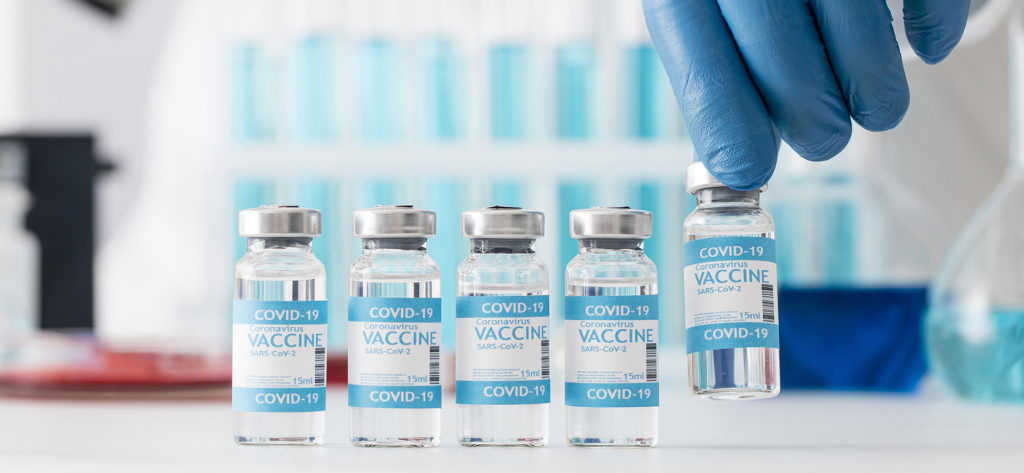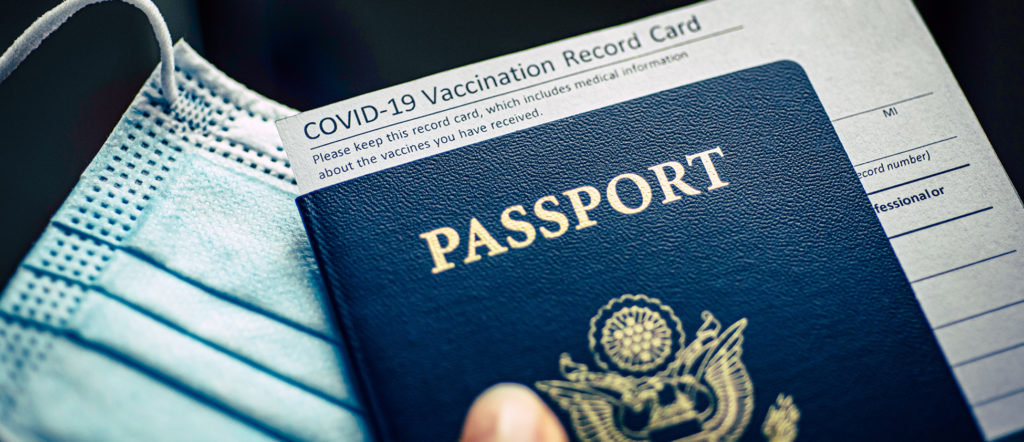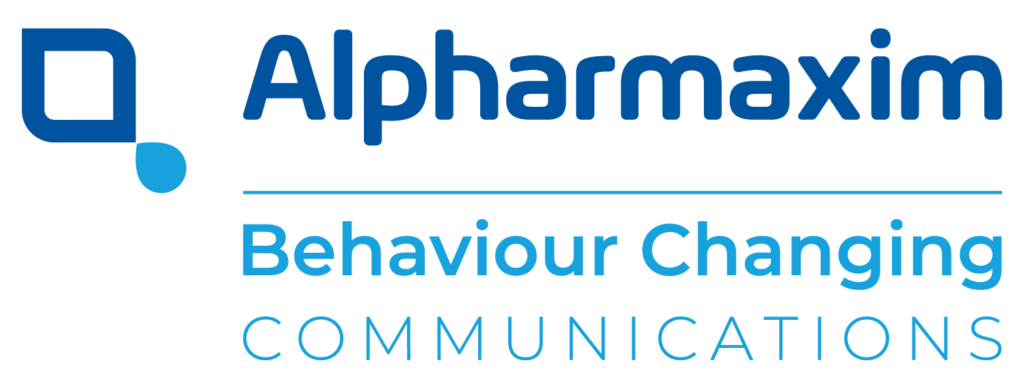What can COVID-19 campaigns tell us about increasing vaccine uptake?
Nick Witts, Copywriter and Editor at Alpharmaxim

“This is the weapon that is going to win the war,” declared New York Governor, Andrew Cuomo.1 Cuomo was speaking about the rollout of one of the first approved COVID-19 vaccines, a hugely important step in the global mass immunisation programme aiming to end the pandemic.
Mass vaccination would of course be fundamental, and with the development of several vaccines it became a possibility. In a pandemic, however, even highly effective vaccines are ineffective at population level unless large numbers of people agree to be vaccinated.2 As such, the WHO maintained that ‘no one is safe from COVID-19 until everyone is safe’.3 In other words, not only was it important to provide access to the vaccines in all countries, but also for the vaccines to be accepted by hesitant or sceptical individuals in those countries that were well stocked.
For this to be achievable, countries across the world would need to encourage sustainable behaviour change to mitigate the impact of the virus, recognising that attitudes towards the COVID-19 vaccines would underpin uptake.4
How can we make sustainable behaviour change a reality?
Each country tackling COVID-19 faced the same challenge – making sustainable behaviour change a reality. How could they nudge the vaccine-hesitant to join those being vaccinated? What methods could they use to get individuals to roll up their sleeves and get protected?
The WHO suggest that the answers partly lay in the use of behavioural and social drivers, influencing: how individuals think and feel about vaccines; the social processes that drive or inhibit vaccination; the levels of motivation to seek vaccination; and the practical issues involved in seeking and receiving vaccination.5

How individuals think and feel about vaccines
When managing an evolving outbreak such as COVID-19, trust is a vital commodity.6 This was key with the COVID-19 vaccine, given it had been developed and approved at an accelerated rate – much faster than the widely held view that drugs take nearly 10 years to go from clinical testing to approval.7 This arguably led vaccine-hesitant individuals to ask whether the vaccine was safe and could be trusted, and may have impacted the way these individuals thought and felt about receiving it.
One response to this was evidence-based public messaging campaigns which helped to allay fears over issues like safety, providing information on the risks versus benefits and the science behind vaccine development.8 With Professor Chris Whitty, Chief Medical Officer, featuring heavily in conferences and briefings,9 the UK Government attempted to address the public’s ‘strong appetite for more information’,10 an approach based on findings in research. For example, a study in America showed vaccine-hesitant individuals videos with evidence-based messaging, such as ‘Did you know? Vaccines are so effective that the risk of getting infected with COVID-19 is reduced 90% after two doses’, and noted that it increased willingness to vaccinate against COVID‑19.8
While communications were widely used as a tool to build trust in the vaccines, it was also important to consider who would deliver the message and how it would be delivered. For example, while trust in government communication has been associated with an increased likelihood of adopting protective behaviour, some marginalised groups, who are especially distrusting of authority, the council or authority figures, may respond with decreased engagement.6,11 The fact that COVID-19 messaging was delivered by a range of public figures, from government authority figures in the UK to celebrities in the US, and through different mediums, such as social media and radio adverts, underlines the importance of how it can impact how individuals think and feel about vaccines.12,13
How individuals interact with social processes surrounding vaccination
The social processes that exist around individuals also play a role in determining vaccine uptake. Family norms, workplace and peer norms, community and religious norms, vaccine stigma, and healthcare provider recommendation all play a role.5 In many cases during the COVID-19 pandemic, these social processes were largely positive. The collectivist mentality that came to the fore was amongst the key factors, as cultural norms emphasised the good of the group over individual liberty.14 In the United States, for example, researchers noted that social processes helped the collectivist mentality to cut across partisan political divides. Through consideration of our social norms, we could help ensure that our wider communities and the high-risk groups were protected – a message covered in WHO COVID-19 messaging.5
One key group impacted by these social processes is the ‘hesitant adopters’ – individuals who become vaccinated despite their hesitancy.15 Does this show us that individuals within society will receive a vaccine if the environmental factors around them support uptake? Research suggests this is the case, as vaccine hesitancy is common even among those who have received a COVID-19 vaccine.15 Might it be that restrictive rules on travel acted as a large enough motivational factor to lead uptake of vaccination? That was possibly the reason for many, although any restriction-based strategy needs to be carefully thought through. Should the influence of social processes be a key consideration in other vaccine campaigns, helping to drive ‘hesitant adopters’ towards uptake? Undoubtedly.
How individuals are driven to be vaccinated
For any individual who receives a COVID-19 vaccine, there is also a level of willingness, a readiness to seek out the means to receive a dose.5 This can be considered the motivation of the individual, and it is dependent on multiple factors, such as childhood experiences of vaccination, through to perceived understanding of the vaccine process.5
Studies point to the many factors that can drive individuals to be vaccinated, which can be either extrinsic, such as an inclination to protect the NHS given it was placed under increased pressure, intrinsic, for example the desire to return to ‘normal’, or structural, including the ability to travel once more.16
Following the rollout of COVID-19 vaccines, there has been recognition that the levels of motivation across some communities have arguably fallen short for several reasons, such as distrust of medical authorities or fears of side effects.17 This has meant that even in countries where COVID-19 vaccines are readily available, such as the UK, uptake figures have been suboptimal.17 This has particularly been the case for those living in deprived areas, and for Black Caribbean, Black African and Pakistani ethnic groups.17
To help address this, the UK Government acknowledged the need to recognise historical healthcare research issues in minority communities as a way of attempting to overcome issues of mistrust,18 as well as increasing confidence in COVID-19 vaccination by providing clear information on the science and side effects. For example, Consultant Epidemiologist and Head of the Immunisation, Hepatitis and Blood Safety department at UKHSA, Mary Ramsay, wrote a blog for the UK Government’s website in 2021 covering information on the science on vaccines, with the very first line reading ‘Vaccines work’.19

How practical it is for individuals to be vaccinated
Finally, ease of vaccination is equally important. The WHO note that for COVID-19 vaccination, this includes availability of vaccines, affordability, ease of access, and service quality.5
In the UK, for example, a study found that travel times to vaccination sites increased as rurality increased during phase two of the COVID-19 vaccine rollout; median journey times by public transport were an estimated 14 minutes in the largest urban centres, compared to 40 minutes in the most rural villages.20 For a country attempting to vaccinate large subgroups of the population – including the elderly, vulnerable, or those with limited mobility or financial resources – this arguably presented challenges. However, by ensuring GPs and community pharmacies were able to administer more doses than originally planned,21 helping to provide more localised vaccination options, we could say the UK Government adapted to these challenges during the rollout. For no one to be left behind globally, we must ensure equitable access to vaccines, regardless of location.
Then there is the issue of time. In the US, New York State demonstrated awareness of the need for such practicalities to be factored into COVID-19 vaccine uptake by passing a law that granted employees up to four hours paid leave to get a vaccine, while some employers even set up on-site vaccine clinics to support accessibility.22 Does this suggest that more can be done on a wider scale to improve the practicality of vaccination? Could we apply any of these learnings in emerging countries too? To ensure everyone is safe, we would need to.

What’s the long-standing impact of COVID-19 vaccination campaigns?
When it comes to other types of vaccines, we may have already taken lessons from the COVID-19 vaccination campaigns. For example, 8.5% of newly eligible flu vaccine recipients in a UK study accepted the opportunity, citing their duty to ‘Protect the NHS’ as the reason.23 This shows how motivational factors may have continued to carry post-COVID-19, and how one of the key COVID-19 campaign messages may still be resonating, with the desire to protect the community continuing to take effect. Yet, it is important to ensure that we don’t get complacent, especially with the impact of COVID-19 being less visible than it was during the height of the pandemic.
Ultimately, for such positive results to be built upon, we must continue to ask questions. Are we ensuring that the right message is being delivered by the right person or group, and in the right way? Can we do more to emphasise positive social norms? How can we further tap into intrinsic motivational factors such as self-protection? And what more can nations do to improve practicality around receiving vaccines?
The answers to these questions, especially when informed by the successes and failures from COVID-19 campaigns, may offer a behaviour change-driven approach to optimising the levels of vaccine uptake – and to increasing recognition that ‘no one is safe until everyone is safe’.
The war against both established and new diseases is ongoing. Behavioural science can help us understand how to win.
References
1. The Lancet. COVID-19 vaccines: the pandemic will not end overnight. The Lancet Microbe 2021;2(1). Available at: https://www.thelancet.com/journals/lanmic/article/PIIS2666-5247(20)30226-3/fulltext. Accessed 18 Sep
2. Lee et al. Institutional and behaviour-change interventions to support COVID-19 public health measures: a review by the Lancet Commission Task Force on public health measures to suppress the pandemic. International Health 2021; 13(5): 399-409. Available at: https://academic.oup.com/inthealth/article/13/5/399/6273788?login=false. Accessed 18 Sep
3. No one is safe from COVID-19 until everyone is safe. 2021. Available at: https://www.who.int/news-room/photo-story/photo-story-detail/No-one-is-safe-from-COVID19-until-everyone-is-safe. Accessed 19 Sep
4. Porat et al. Public Health and Risk Communication During COVID-19—Enhancing Psychological Needs to Promote Sustainable Behavior Change. Frontiers 2020; 8. Available at: https://www.frontiersin.org/articles/10.3389/fpubh.2020.573397/full?&utm_source=Email_to_authors_&utm_medium=Email&utm_content=T1_11.5e1_author&utm_campaign=Email_pu
blication&field=&journalName=Frontiers_in_Public_Health&id=573397. Accessed 18 Sep
5. Behavioural and social drivers of vaccination Tools and practical guidance for achieving high uptake. Available at: https://apps.who.int/iris/handle/10665/354459. Accessed: 21 July 2023
6. Lim et al. Government trust, perceptions of COVID-19 and behaviour change: cohort surveys, Singapore 2021; 99(2): 92-101.Available at: https://www.ncbi.nlm.nih.gov/pmc/articles/PMC7856356/. Accessed 18 Sep
7. McKinsey & Company. Fast-forward: Will the speed of COVID-19 vaccine development reset industry norms? 2021. Available at: https://www.mckinsey.com/industries/life-sciences/our-insights/fast-forward-will-the-speed-of-covid-19-vaccine-development-reset-industry-norms. Accessed: 18 Sep
8. Jensen, U, T., Ayers, S., Koskan, A, M. Video-based messages to reduce COVID-19 vaccine hesitancy and nudge vaccination intentions. Plos One Available at: https://journals.plos.org/plosone/article?id=10.1371/journal.pone.0265736. Accessed 18 Sep
9. UK Government. Speech: Chief Scientific Advisor and Chief Medical Officer briefing on coronavirus (COVID-19): 21 September 2020. 2020. Available at: https://www.gov.uk/government/speeches/chief-scientific-advisor-and-chief-medical-officer-briefing-on-coronavirus-covid-19-21-september-2020–2. Accessed: 18 Sep
10. UK Government. The Government’s Response to the Science and Technology Committee report: The UK Response to Covid-19: Use of Scientific Advice. 2021. Available at: https://www.gov.uk/government/publications/use-of-scientific-advice-in-the-uk-response-to-covid-19-government-response-to-science-and-technology-committee-report. Accessed 18 Sep
11. Local Government Association. Looking forward – behavioural insights to consider. Available at: https://www.local.gov.uk/our-support/coronavirus-information-councils/covid-19-service-information/covid-19-vaccinations/behavioural-insights/resources/looking-forward. Accessed 18 Sep
12. The Guardian. ‘The scientists have done it’: Boris Johnson hails Covid vaccine. 2020. Available at:https://www.theguardian.com/politics/2020/dec/02/the-scientists-have-done-it-boris-johnson-hails-covid-vaccine. Accessed: 18 Sep
13. Fierce Pharma. Pfizer uses star power to emphasize risk factors and COVID in latest vaccine ad push. 2023. Available at: https://www.fiercepharma.com/marketing/pfizer-uses-star-power-emphasize-risk-factors-and-covid-19. Accessed 18 Sep
14. Matthews et al. Messaging Strategies for Mitigating COVID-19 Through Vaccination and Nonpharmaceutical Interventions. Rand Health Quarterly 2022; 9(3):13. Available at: https://www.ncbi.nlm.nih.gov/pmc/articles/PMC9242567/. Accessed: 18 Sep
15. Willis et al. Social processes, practical issues, and COVID-19 vaccination among hesitant adults. Vaccine 2023; 41(35): 5150-5158. Available at: https://www.sciencedirect.com/science/article/abs/pii/S0264410X23008095. Accessed: 18 Sep
16. Moore at al. Motivations to Vaccinate Among Hesitant Adopters of the COVID-19 Vaccine. Journal of Community Health 2022; 47(2):237-245. Available at: https://www.ncbi.nlm.nih.gov/pmc/articles/PMC8536476/. Accessed: 18 Sep
17. Michie, S. Encouraging vaccine uptake: lessons from behavioural science. Nature Reviews Immunology 2022; 22: 527–528. Available at: https://www.nature.com/articles/s41577-022-00769-2. Accessed 18 Sep
18. UK Government. Factors influencing COVID-19 vaccine uptake among minority ethnic groups, 17 December 2020. 2021. Available at: https://www.gov.uk/government/publications/factors-influencing-covid-19-vaccine-uptake-among-minority-ethnic-groups-17-december-2020. Accessed 18 Sep
19. Ramsay, M. Transparency and data – UKHSA’s vaccines report. 2021. Available at: https://ukhsa.blog.gov.uk/2021/11/02/transparency-and-data-ukhsas-vaccines-report/. Accessed 18 Sep
20. Duffy, C., Newing, A., Górska, J. Evaluating the Geographical Accessibility and Equity of COVID-19 Vaccination Sites in England. Vaccines 2022; 10(1): 50. Available at: https://www.ncbi.nlm.nih.gov/pmc/articles/PMC8781430/. Accessed 18 Sep
21. National Audit Office. The rollout of the COVID-19 vaccination programme in England. Available at: https://www.nao.org.uk/wp-content/uploads/2022/02/The-rollout-of-the-COVID-19-vaccination-programme-in-England.pdf. Accessed 18 Sep
22. The Behavioural Insights Team. Practicalities are the most significant impediments to people getting a COVID vaccine – and the easiest to address. 2021. Available at: https://www.bi.team/blogs/practicalities-are-the-most-significant-impediments-to-people-getting-a-covid-vaccine-and-the-easiest-to-address/. Accessed 18 Sep
23. Bachtiger et al. The Impact of the COVID-19 Pandemic on the Uptake of Influenza Vaccine: UK-Wide Observational Study. JMIR Public Health and Surveillance 2021; 7(4). Available at: https://www.ncbi.nlm.nih.gov/pmc/articles/PMC8048709/. Accessed: 18 Sep


